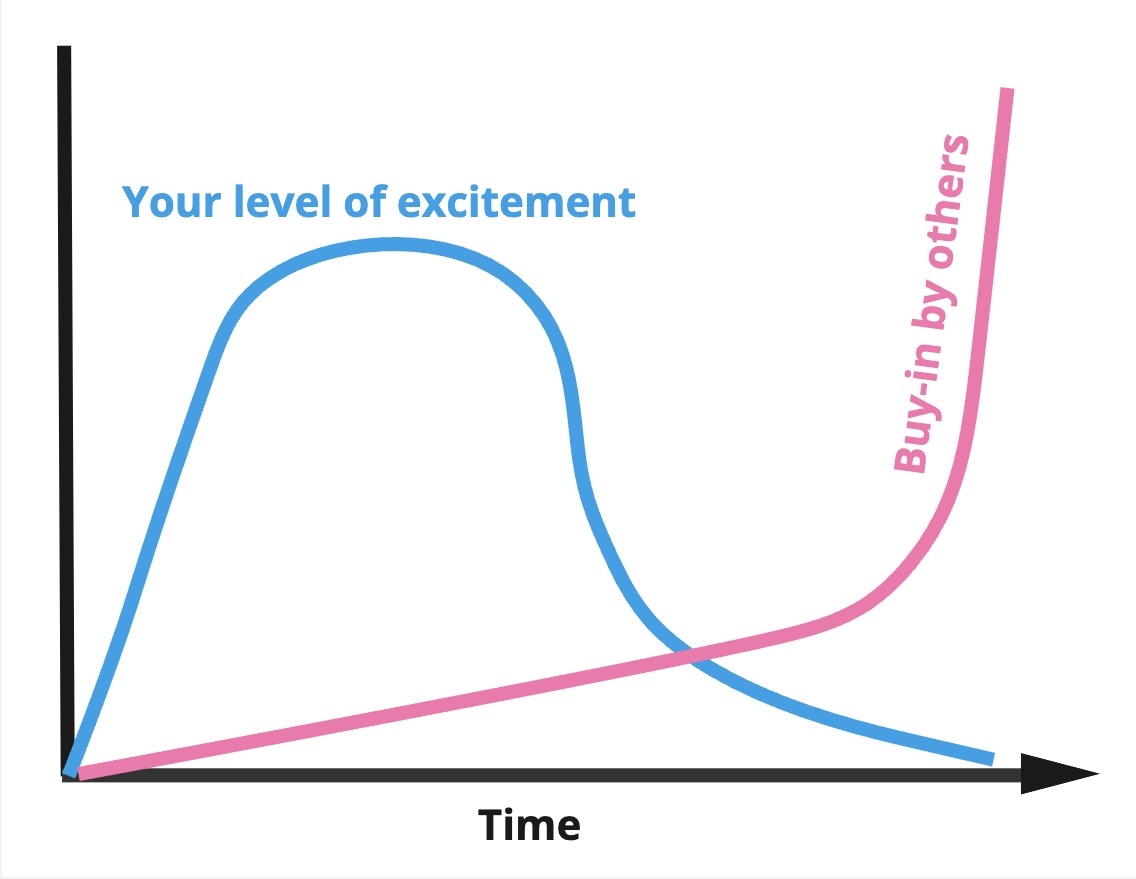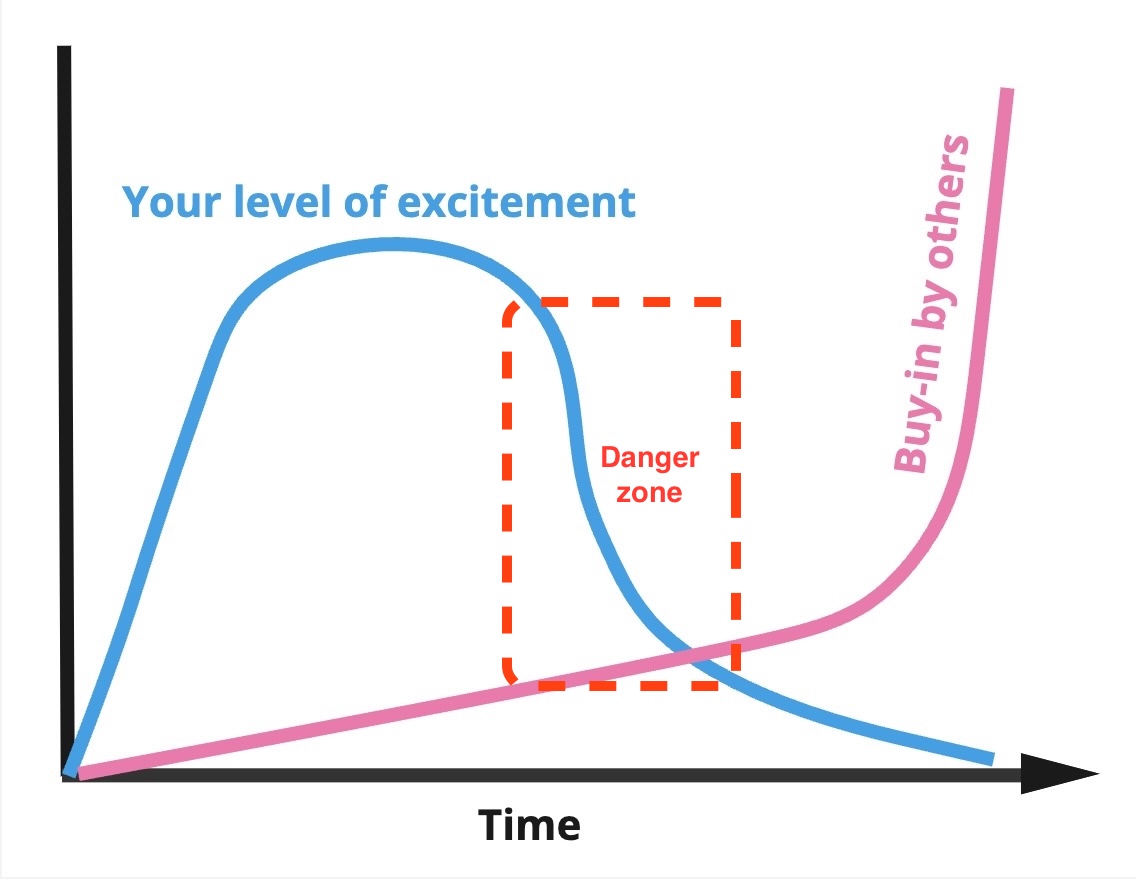Changing your organisation culture
January 2025
Your organisation culture is not a set of values in your website. That’s a naive assumption. In reality, your actions are what define your culture. It’s what you do, not what you think you are.
If you are passive about defining and building your culture, you are at the mercy of random acts. This is really dangerous, because it’s aimless. You are not working towards a purpose, you are just reacting. You have to be driven and consistent to achieve a culture that reflects your values.
You need to spend time working on your day to day actions to actively define your culture. One big gesture is not enough, talking about what you want is not enough. Consistently doing, creating habits, being proactive, is how you get there. Your culture is your recurring behaviours.
This article offers some strategies on how to drive cultural change:
- Identify the purpose
- Start small
- Be consistent until you get buy-in
- Step up the game
With that in mind, let’s get on with it!
Identify the change
The first thing you need to be clear about is your end goal. What culture trait does your organisation need to adopt or change? It seems obvious, but it’s the first step in being proactive about a culture change.
For example, you might want to foster a culture of continuous learning in your organisation. Sounds great, and the good news is that you have taken the first step to get there. You’ve figured out what you want.
Usually, this is were most people stop. They identify what they want their culture to be, and then wait for it to magically stick with the people. That’s naive. It’s very important to know what you want, but you have to be immensely lucky for something to happen without taking any action.
Start small
Now that you have an end goal, you need to incrementally get there. There are times where big bag changes might work, but more often than not, they don’t. There is a reason why so many things are done step by step, not just in one go. Change resistant, inertia, coming back to old habits, breaking with tradition. Big changes are much more challenging than small ones.
Figure out the smallest thing you can change that gets you closer to your goal. Once you know what it is, do it now. Take action immediately.
For the previous example, it can be something as simple as sharing a link about something you learned this week with the rest of the people in the organisation.
The act in itself is not important. Acting towards your goal is what’s important. At this point, you are leading by example, and you are showing others how to affect your culture with a simple action.
Now, your are proactively working on your organisation culture now. It feels good, but in order for the change to stick, you have to be consistent and keep repeating the action regularly.
Be consistent until you get buy-in
It feels good. You are starting something, a new movement. You are changing things. Now, you need the rest of the organisation to follow your lead. This is the most time consuming and demotivating part of the process. It’s not difficult, though. You just need to be consistent and follow through.
There is no way around it. Cultural change takes time. If you don’t keep on doing the actions repeatedly, your initiative is likely to be abandoned. You have to repeat your message over and over and over again. And the best way to do that, is by converting your small action into a habit. This is important, because you need to rely on your system to keep going when things get boring.
The following graph describes your level of excitement about the change versus the organisation consolidation of the change:

There is a very long danger zone in that graph. You don’t have enough buy-in, but you are already getting tired of your own idea. That danger zone is where you are most likely to abandon your idea before it sticks in your organisation, making it unsuccessful.
It’s a difficult time because you have been at it for a while and you haven’t seen a big change yet, so it is easy to get demoralised.

That’s why it’s so important to have a system that helps you with creating new habits for your new change initiatives. Your system will get you through the danger zone in automatic pilot. You’ll be out of the woods without even thinking about it.
Using the previous example again, the danger zone is when you get some people to share links as well, but you don’t get a lot of engagement yet. At that point, it’s really easy to stop bothering. It looks like, yes, some people are kind of taking your change on, but many others are not really into it. Do you want to spend the time it takes? Would people think you are being a bit tiring? You start doubting yourself and you get a bit demoralise. Now, If you have built your action into a habit, you just do it without thinking about it anymore until it becomes something bigger.
Step up the game
Finally, your first step towards your end goal has been successful. People got it and things are happening. You have affected your organisation’s culture.
You still have work to do, though. Take the next small step. Create another action that complements your previous one and takes you a bit closer to your end goal. You know how to do this now, so keep going until you reach you goal.
Sometimes, the small change you are implementing might not work. And that’s OK. That’s why you want to focus on small steps, because if you are not getting what you want from it, you can just abandon it and think about something else.
In the end, what’s important is for you to think about ways to incrementally affect your culture, so you are proactively taking it closer and closer to where you want it.
That’s all!